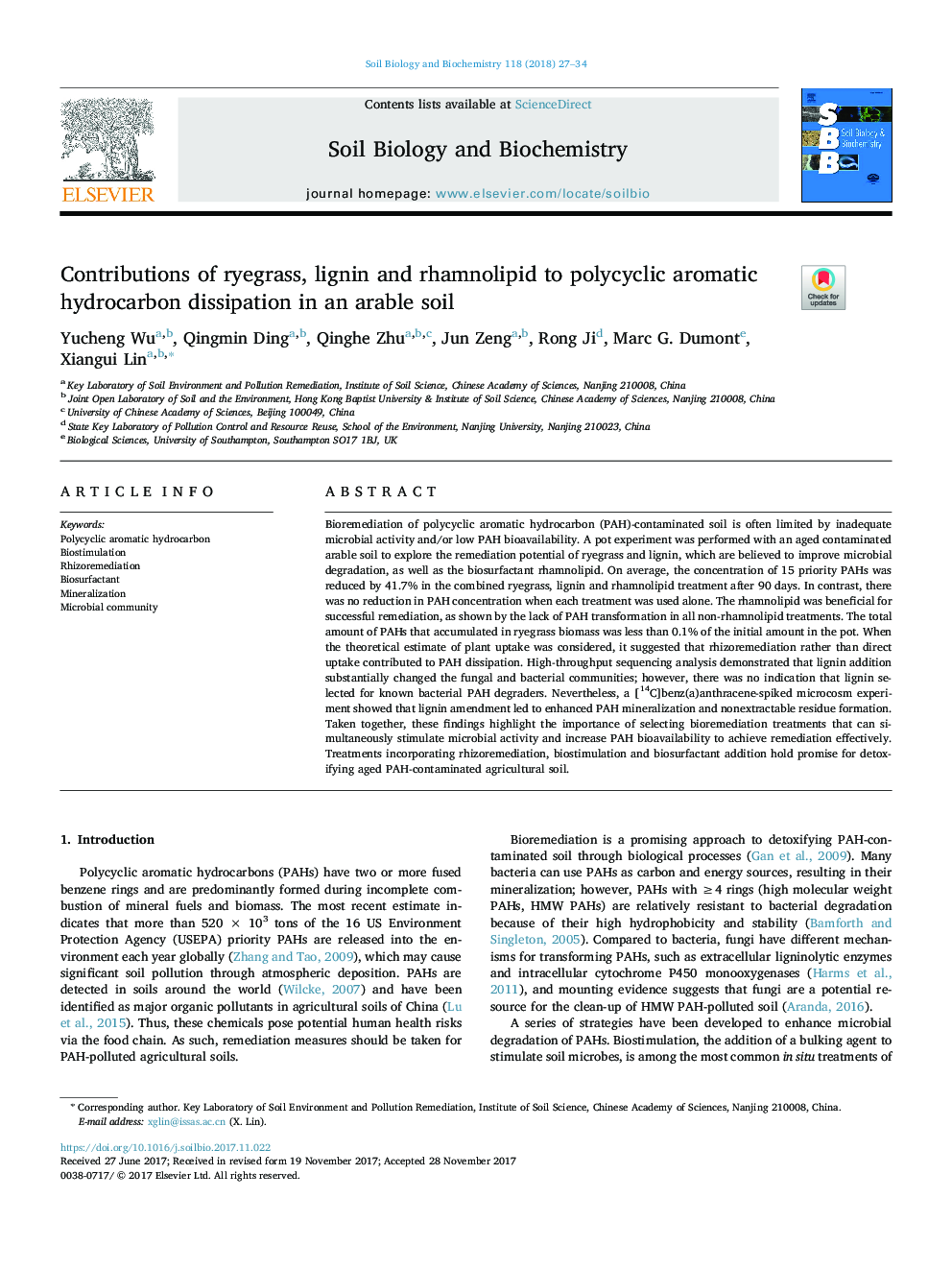| Article ID | Journal | Published Year | Pages | File Type |
|---|---|---|---|---|
| 8362951 | Soil Biology and Biochemistry | 2018 | 8 Pages |
Abstract
Bioremediation of polycyclic aromatic hydrocarbon (PAH)-contaminated soil is often limited by inadequate microbial activity and/or low PAH bioavailability. A pot experiment was performed with an aged contaminated arable soil to explore the remediation potential of ryegrass and lignin, which are believed to improve microbial degradation, as well as the biosurfactant rhamnolipid. On average, the concentration of 15 priority PAHs was reduced by 41.7% in the combined ryegrass, lignin and rhamnolipid treatment after 90 days. In contrast, there was no reduction in PAH concentration when each treatment was used alone. The rhamnolipid was beneficial for successful remediation, as shown by the lack of PAH transformation in all non-rhamnolipid treatments. The total amount of PAHs that accumulated in ryegrass biomass was less than 0.1% of the initial amount in the pot. When the theoretical estimate of plant uptake was considered, it suggested that rhizoremediation rather than direct uptake contributed to PAH dissipation. High-throughput sequencing analysis demonstrated that lignin addition substantially changed the fungal and bacterial communities; however, there was no indication that lignin selected for known bacterial PAH degraders. Nevertheless, a [14C]benz(a)anthracene-spiked microcosm experiment showed that lignin amendment led to enhanced PAH mineralization and nonextractable residue formation. Taken together, these findings highlight the importance of selecting bioremediation treatments that can simultaneously stimulate microbial activity and increase PAH bioavailability to achieve remediation effectively. Treatments incorporating rhizoremediation, biostimulation and biosurfactant addition hold promise for detoxifying aged PAH-contaminated agricultural soil.
Keywords
Related Topics
Life Sciences
Agricultural and Biological Sciences
Soil Science
Authors
Yucheng Wu, Qingmin Ding, Qinghe Zhu, Jun Zeng, Rong Ji, Marc G. Dumont, Xiangui Lin,
